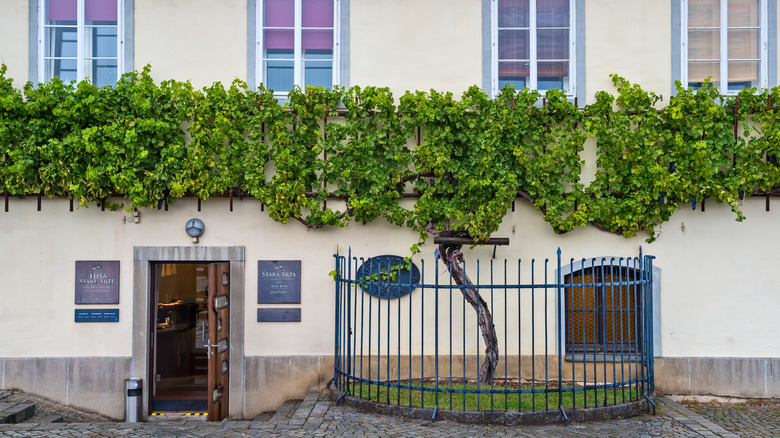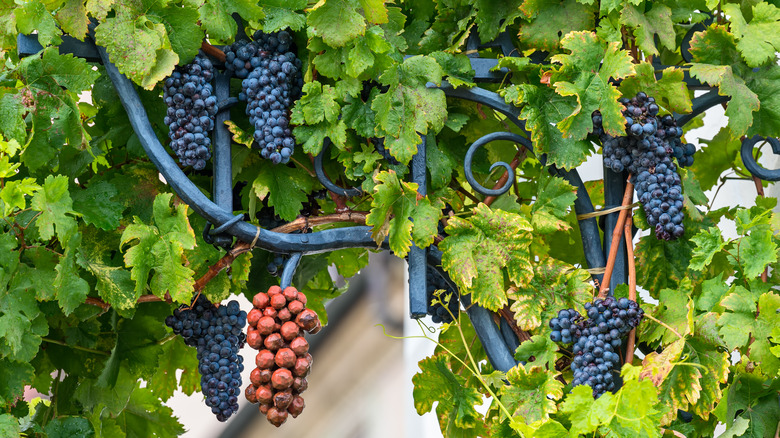Where Can You Find The Oldest Grapevine That Still Produces Fruit?
Making wine takes a bit of patience. Wine Folly explains that it typically takes about three years for a grapevine to begin producing fruit for making wine. Vines are considered "adult" at around seven to eight years of age and "mature" at 12 to 25 years old. Redman Wines, in Australia's Coonawarra region, explains that after 20 to 25 years of age, the yield of these vieille vignes, or old vines, begins to decrease. However, the fruit that old vines produce tends to be more concentrated and highly desirable.
While grapevines can live 125 years or more, Decanter notes that the typical commercial lifespan of a vineyard is about 35 years, after which most vineyards are replanted. There are, of course, notable exceptions.
According to Sierra Lodestar, the Grandpere Vineyard, also known as Vineyard 1869, is the oldest California vineyard that can prove its age with a verifiable paper trail. The vineyard is planted to Zinfandel, a variety known for its longevity, and produces just enough fruit to parcel it out to a scant handful of producers who treasure the juice from the gnarled 154-year-old vines.
While we may marvel at a vineyard planted in 1869, the oldest grapevine that still produces fruit — fruit that's harvested each year and made into wine, no less — comes from a bit further afield, in an area with winemaking roots that date back to the fifth century B.C.E. (via Wine 4 Food).
The oldest grapevine lives in Maribor, Slovenia
According to Guinness World Records, the world's oldest grapevine is located in Maribor, Slovenia. Known as the Old Vine, it's roughly 400 years old, an interesting counterpoint to the history of its home country since Slovenia was only recognized as an independent country in 1991, per Wine 4 Food. The Old Vine is a red grape variety called Žametovka, also known as Bleu de Cologne (via I Feel Slovenia). The world looked quite different when the Žametovka vine was planted in the late Middle Ages, and it has become the only grapevine with its own museum, the Old Vine House.
Wine Enthusiast explains that each year, the grapevine yields roughly 100 pounds of fruit made into 100 eight-ounce bottles, precious treasures bestowed on "royalty, residents, popes, and celebrities." The vine has survived phylloxera, the louse that destroyed grapevines all over Europe in 1870, and despite the house's partial destruction from bombings in World War II, it still grows strong.
The Old Vine House has since been restored with a tasting room, and the surrounding area hosts annual festivals that celebrate the careful pruning and the harvest of the world's oldest grapevine. And Slovenia, considered an under-the-radar destination for wine or culinary vacation, has shared vine cuttings of its treasured Old Vine Žametovka that grow in countries all over the world, including Denmark, Japan, Australia, Germany, and the Czech Republic (per Wine Travel in Czech).

